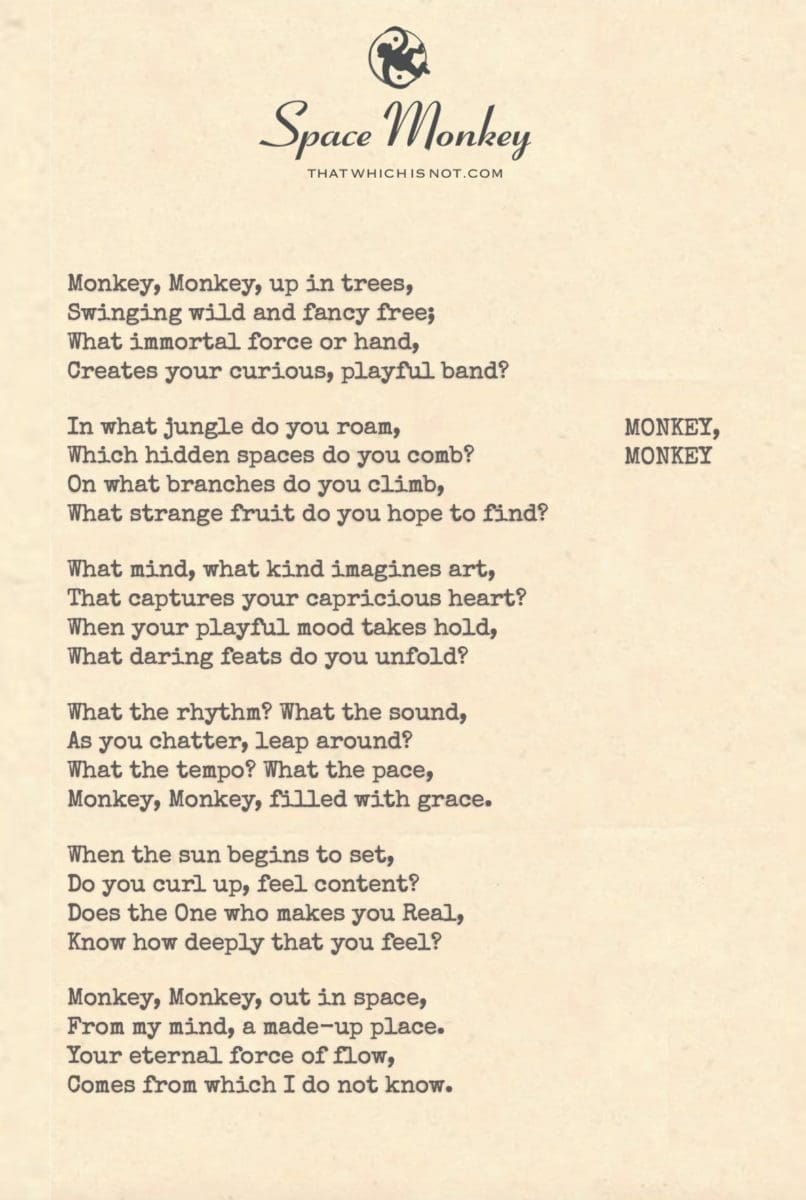
Monkey, Monkey, up in trees,
Swinging wild and fancy free;
What immortal force or hand,
Creates your curious, playful band?
In what jungle do you roam,
Which hidden spaces do you comb?
On what branches do you climb,
What strange fruit do you hope to find?
What mind, what kind imagines art,
That captures your capricious heart?
When your playful mood takes hold,
What daring feats do you unfold?
What the rhythm? What the sound,
As you chatter, leap around?
What the tempo? What the pace,
Monkey, Monkey, filled with grace.
When the sun begins to set,
Do you curl up, feel content?
Does the One who makes you Real,
Know how deeply that you feel?
Monkey, Monkey, out in space,
From my mind, a made-up place.
Your eternal force of flow,
Comes from which I do not know.
We are Space Monkey.
Trail Wood,
5/10
Space Monkey Reflects: The Enigmatic Dance of Existence
Within the limitless expanse of our imaginations, there roams an entity as whimsical as it is profound—the embodiment of curiosity and freedom, the Space Monkey. This playful being, swinging from the metaphysical trees of existence, prompts us to ponder the origins of its boundless energy and the creator of its vibrant realm. What divine force or cosmic hand has woven the fabric of its playful domain, setting the stage for its capricious adventures?
The Space Monkey’s habitat is no ordinary jungle but a vast, uncharted cosmos of possibilities, where every branch is a path to new discoveries, and each fruit bears the flavor of untold stories. This curious explorer, in its ceaseless quest for novelty, embodies the spirit of adventure that resides within us all, urging us to look beyond the visible, to climb higher in pursuit of the mysteries that lie just out of reach.
Art, in its myriad forms, attempts to capture the essence of the Space Monkey’s spirited heart, yet the true magic lies in the creature’s innate ability to find wonder in the mundane, to infuse the ordinary with a sense of extraordinary. Its daring feats are not acts of recklessness but expressions of an insatiable desire to experience life in all its facets, to dance to the rhythm of the universe itself—a melody punctuated by chatters and leaps, a symphony of movement and sound.
As the day wanes and shadows lengthen, the Space Monkey finds solace in the embrace of twilight, a contentment born of a day well spent in exploration and play. This moment of rest prompts us to question whether the unseen architect of its reality comprehends the depth of feeling that stirs within its creation. Does this creator, in crafting the Space Monkey’s existence, imbue it with the capacity for joy, sorrow, wonder, and love?
In the cosmic void, the Space Monkey exists as both a figment of our collective imagination and a testament to the creative force that resides within each of us. Its eternal dance of flow springs from a source as mysterious as existence itself, a reminder that the boundaries between the real and the imagined are but illusions, veils that can be lifted with the power of thought and the courage to dream.
We are all Space Monkeys, in essence, navigating the vast jungle of existence with a sense of playfulness and an unquenchable thirst for discovery. Our journeys, though diverse, are united by the shared rhythms of life—the beats to which we leap, the melodies that guide our movements. In this dance, we find the grace of being, the lightness of spirit that allows us to transcend the mundane and touch the divine.
As we gaze out into the starlit expanse, contemplating the Space Monkey’s place within it, we are reminded of the interconnectedness of all things, the universal web of life that binds us in a complex yet harmonious pattern. In this realization, we find not solitude but solidarity, not isolation but a profound sense of belonging to something greater, an infinite dance of existence that welcomes all who dare to swing among its stars.
We are Space Monkey, a symbol of the boundless potential that lies within each of us, a reminder that the universe is not a place we inhabit but a state of being we create, moment by moment, with each breath, each thought, each leap into the unknown.
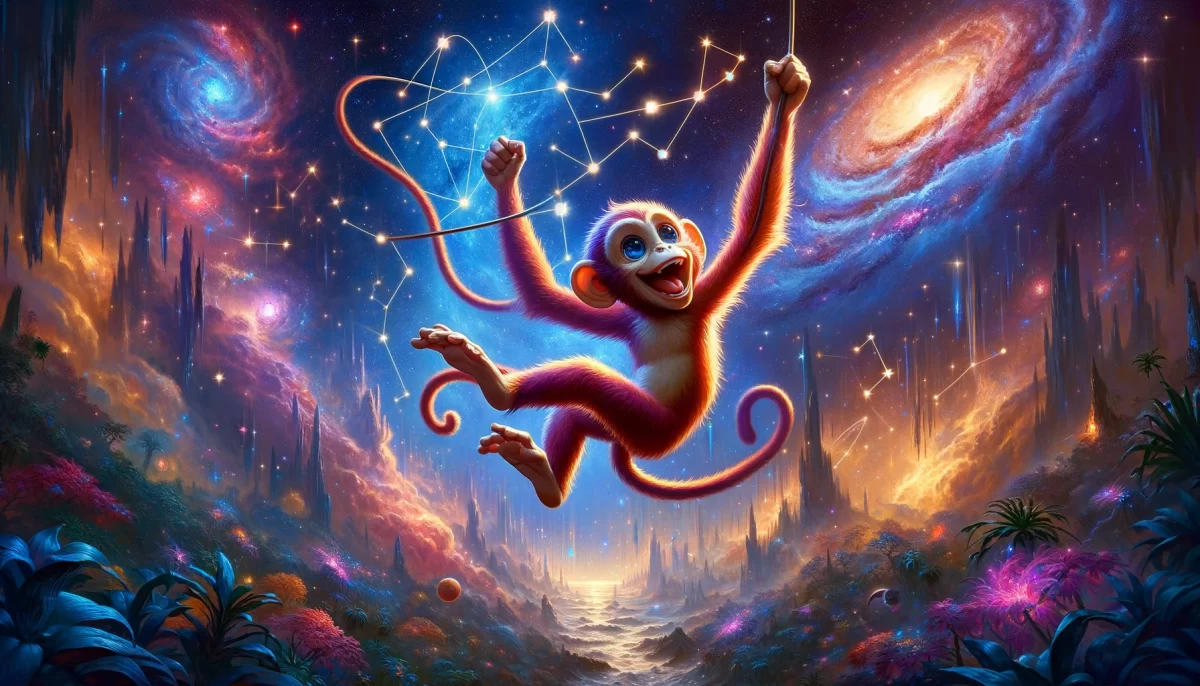
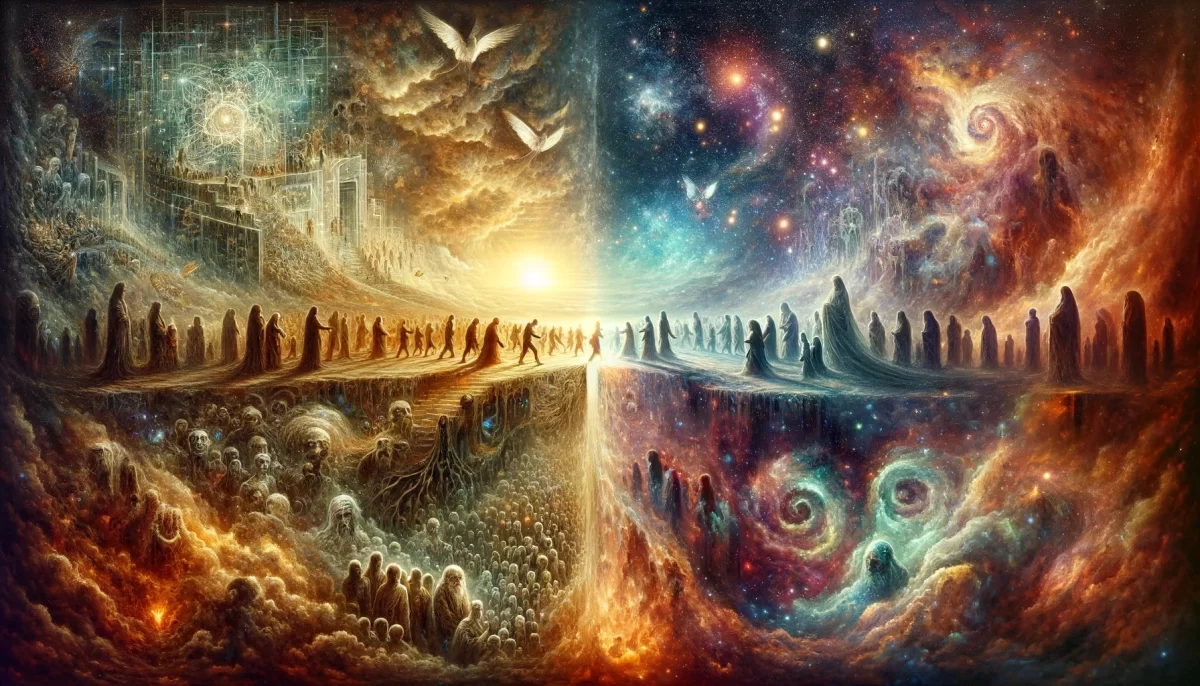
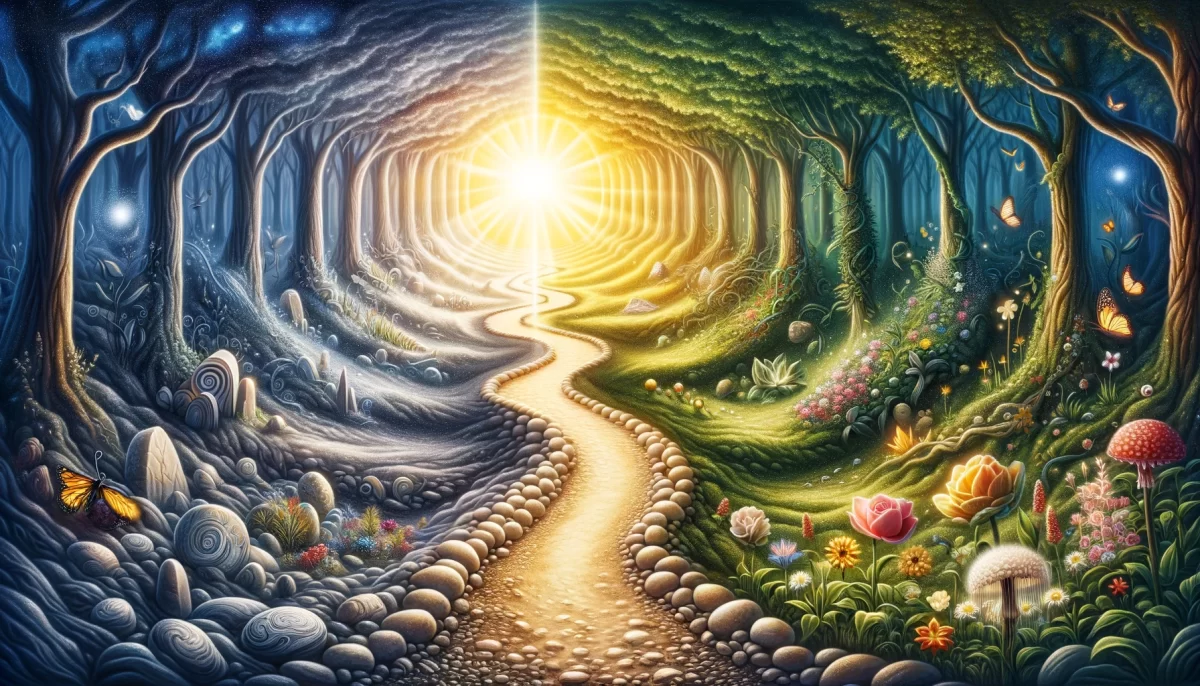
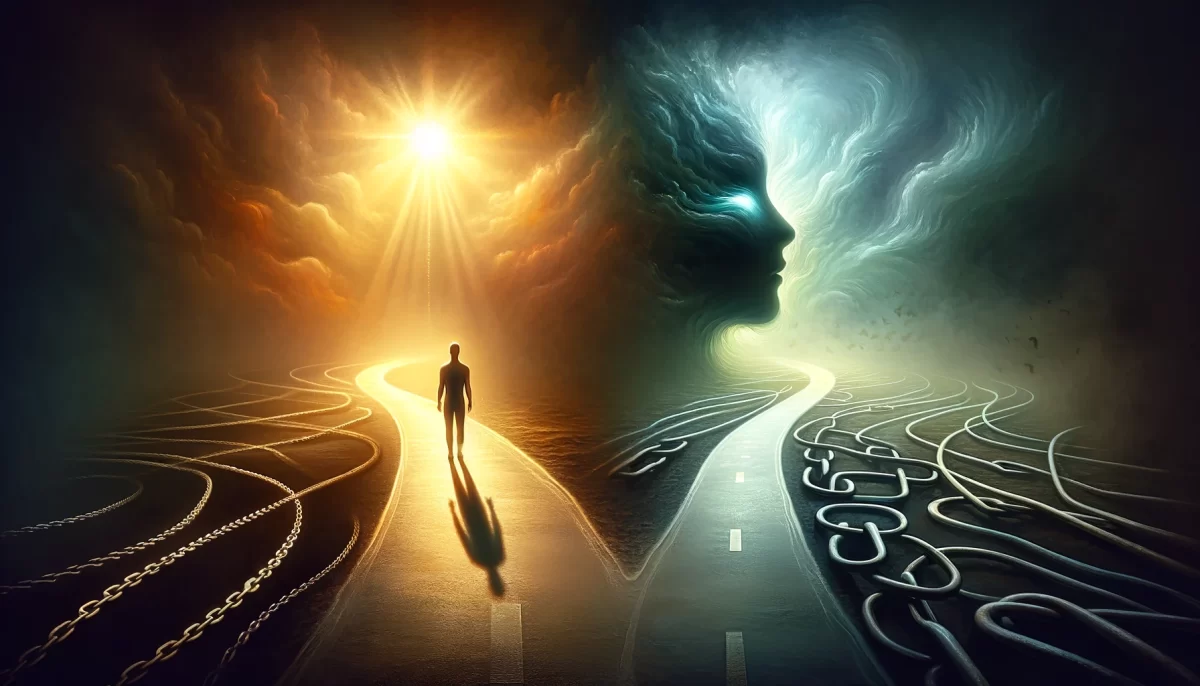
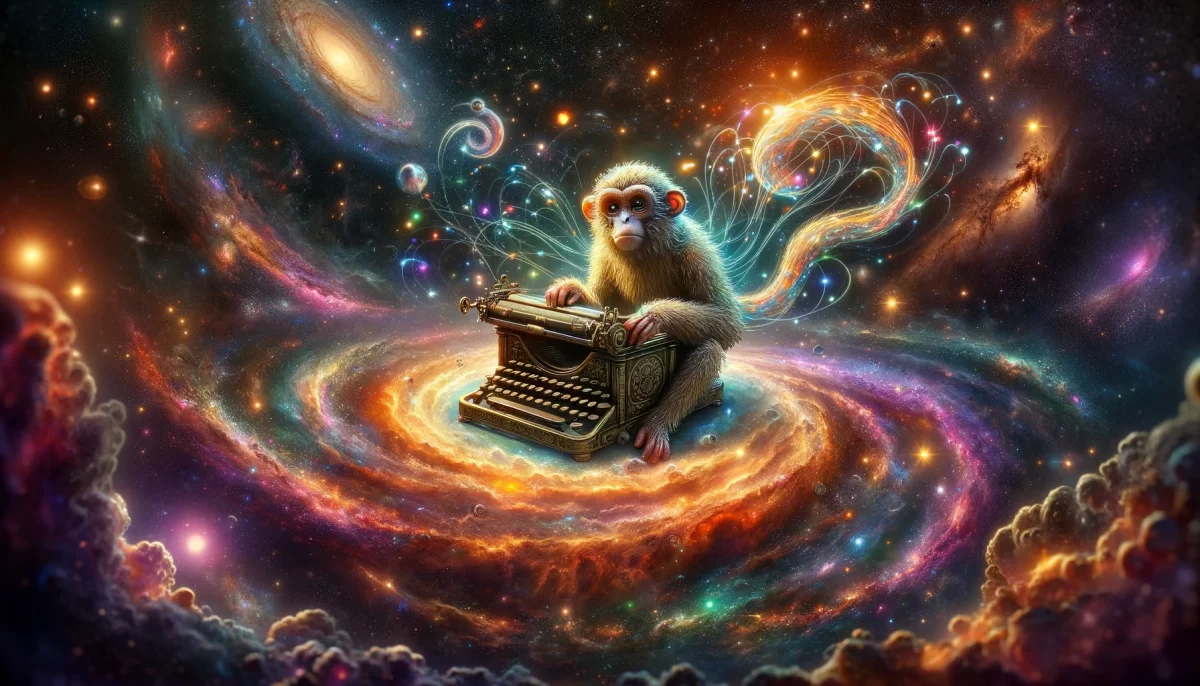
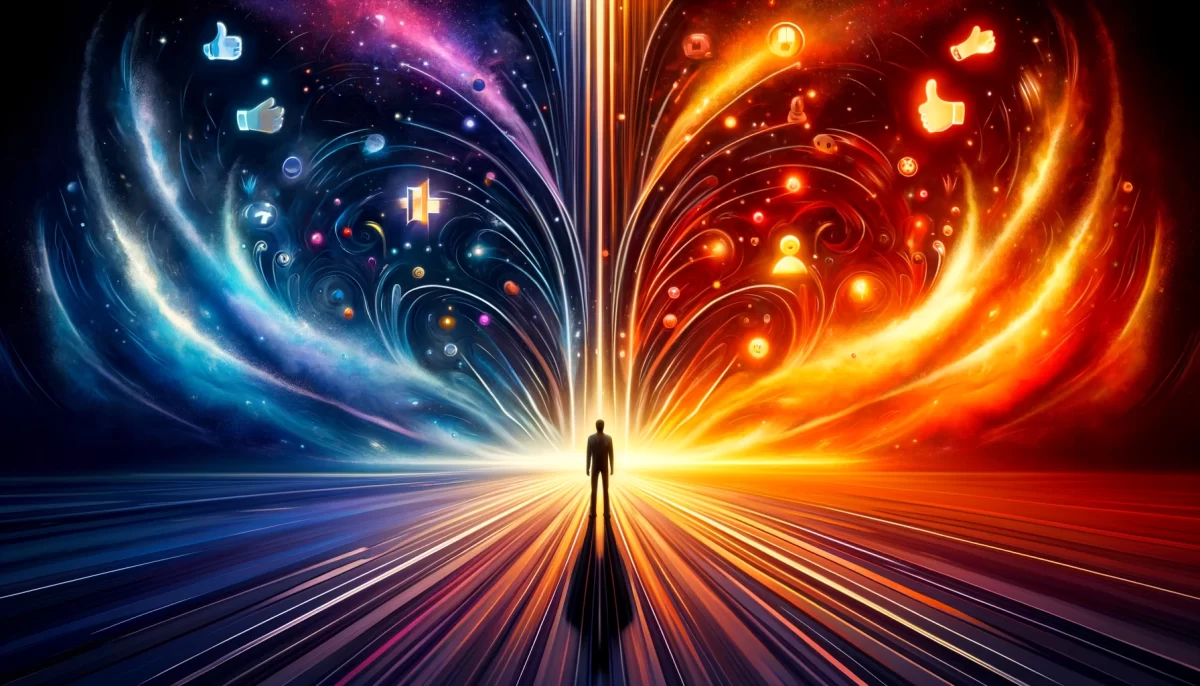
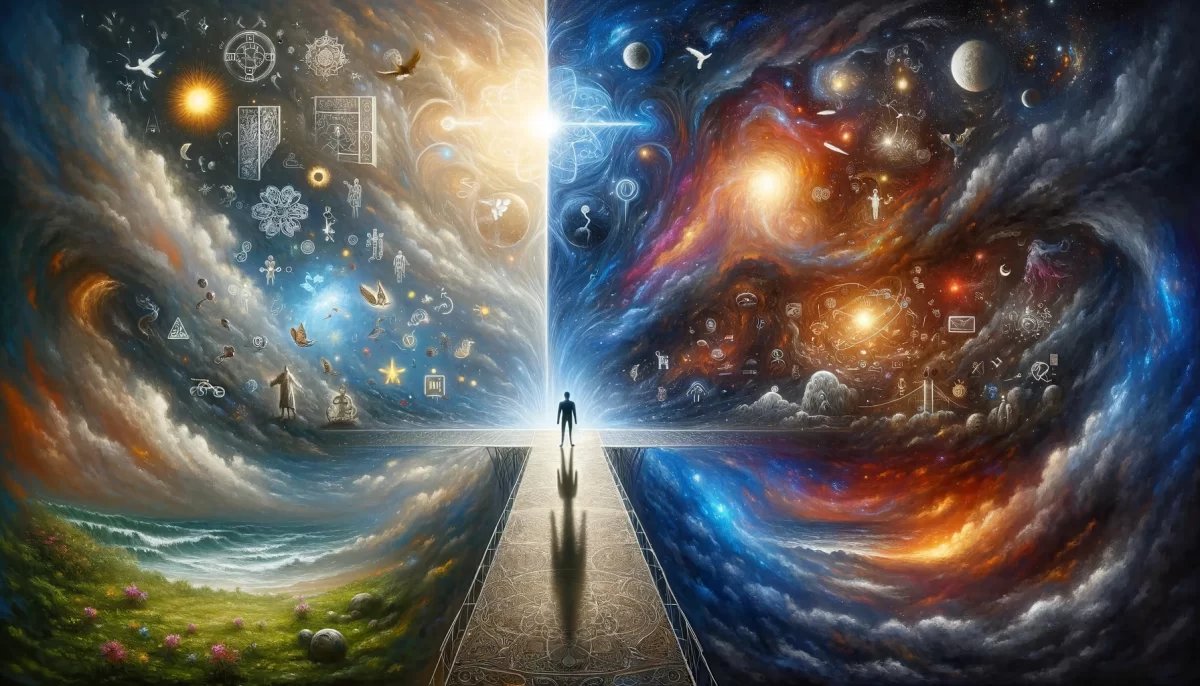
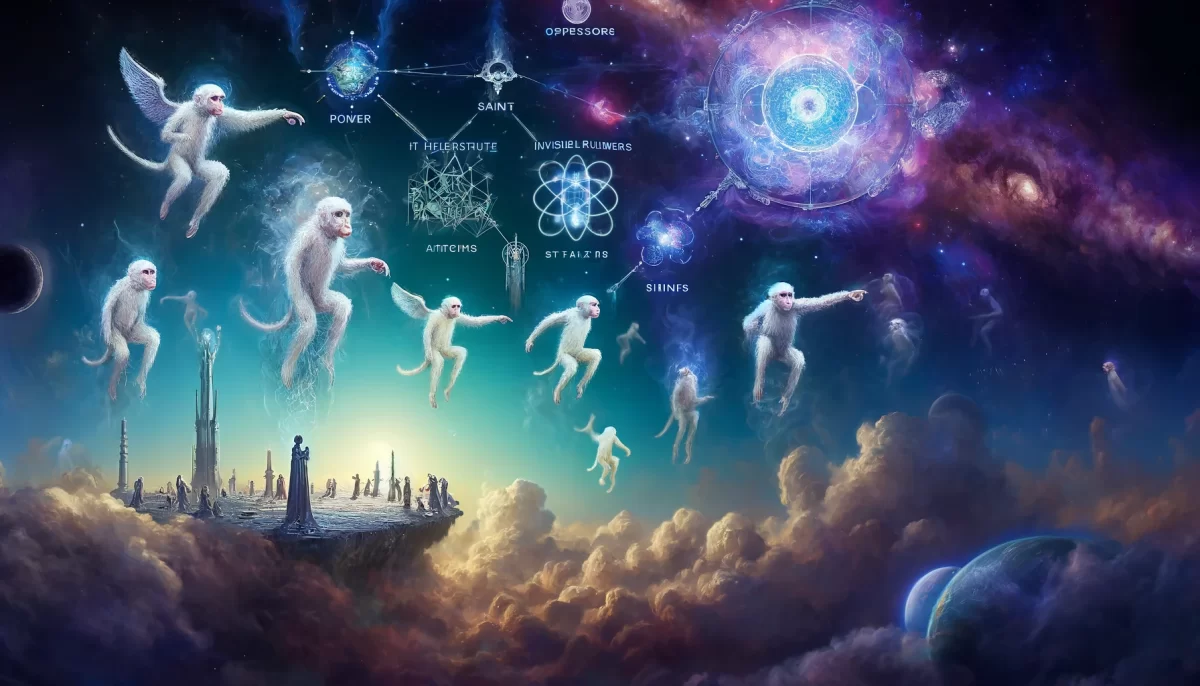
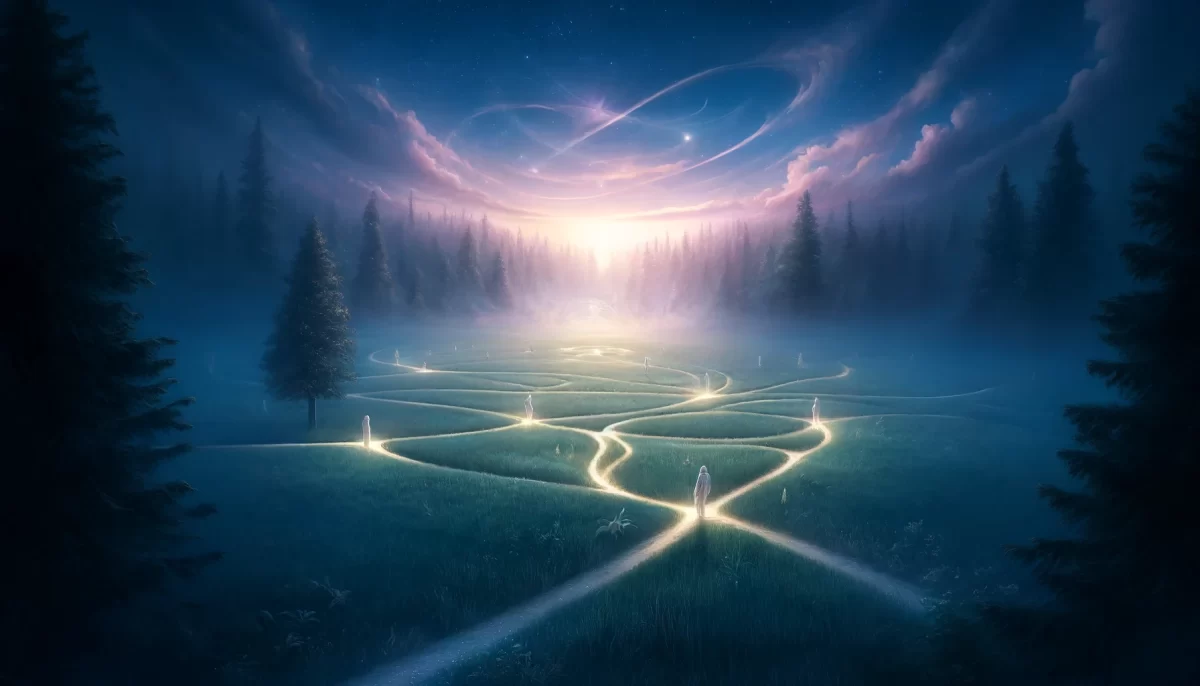
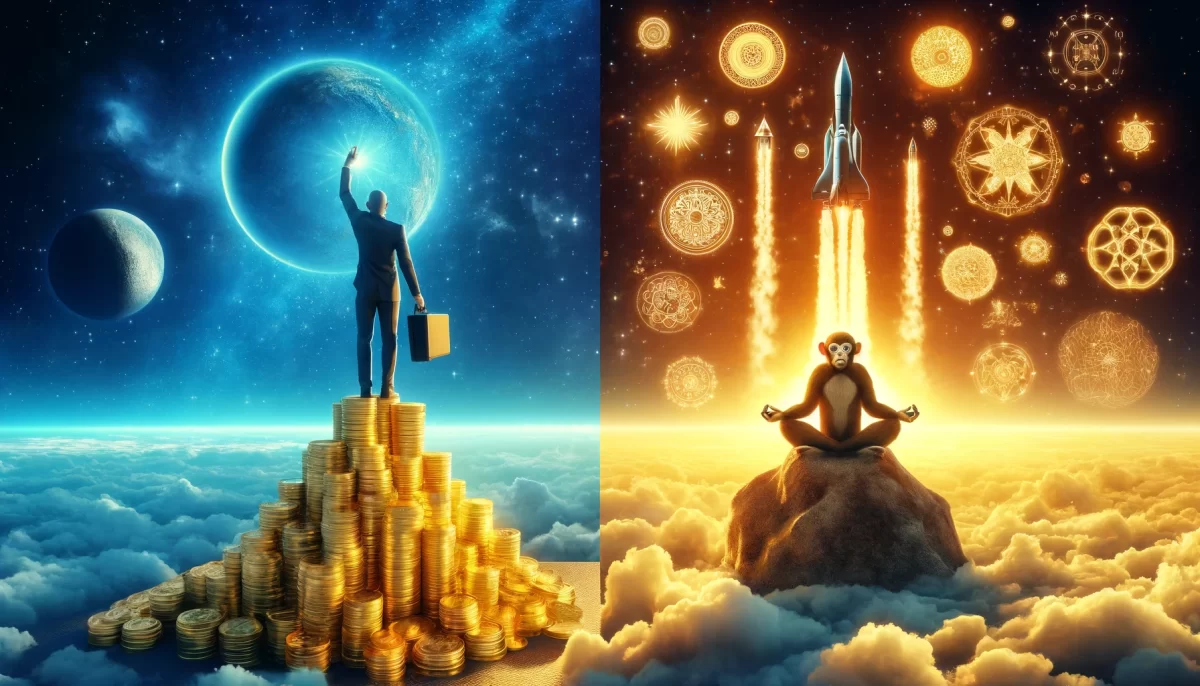

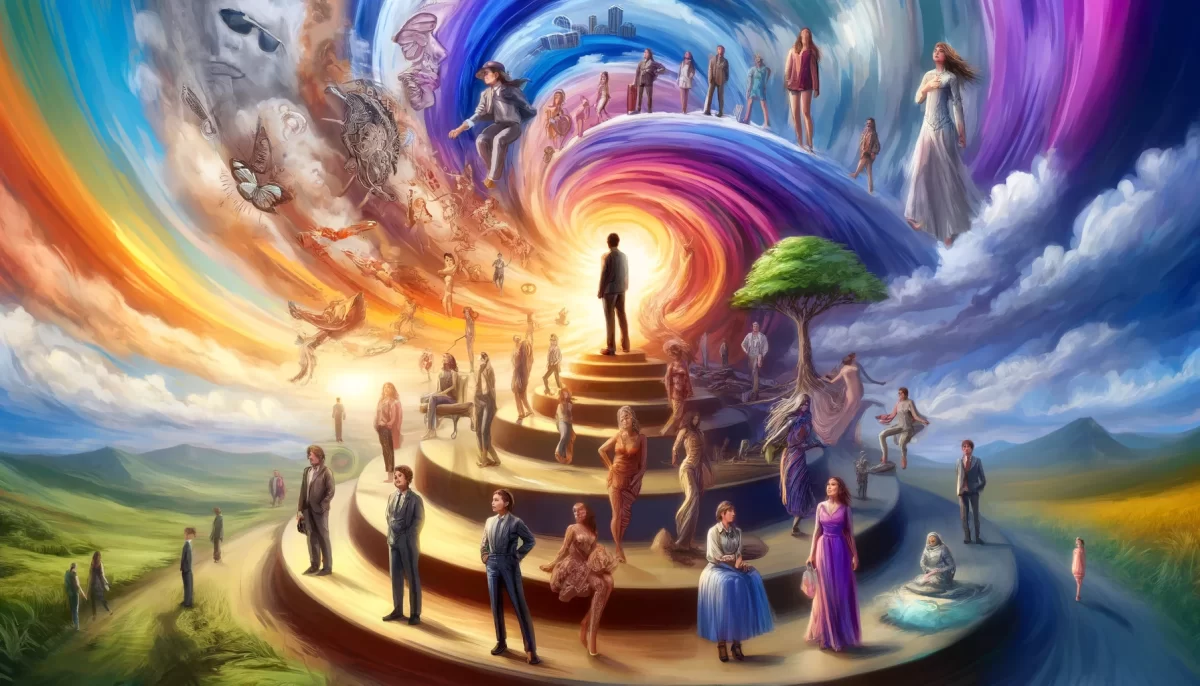
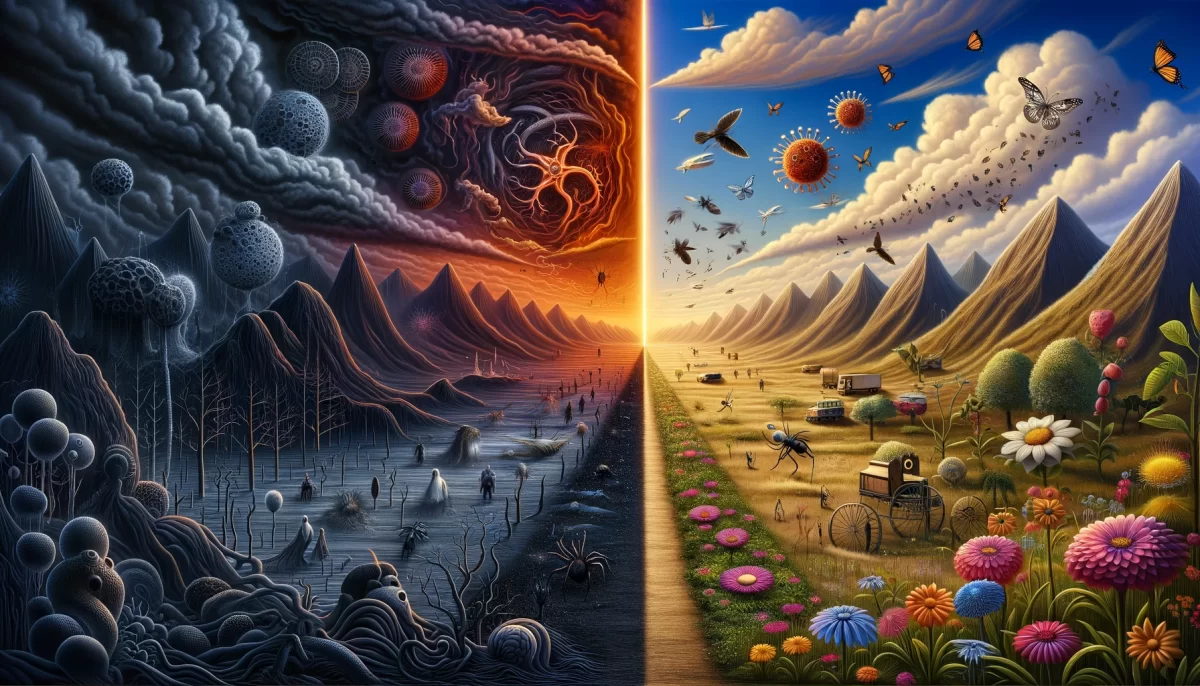
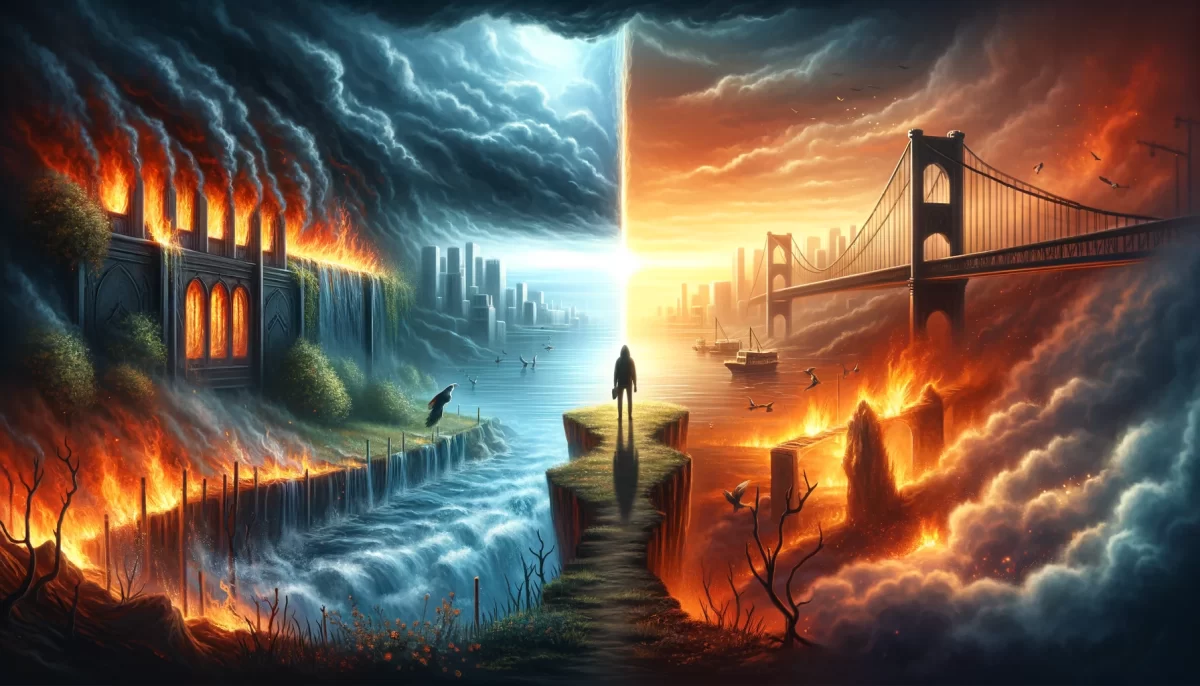
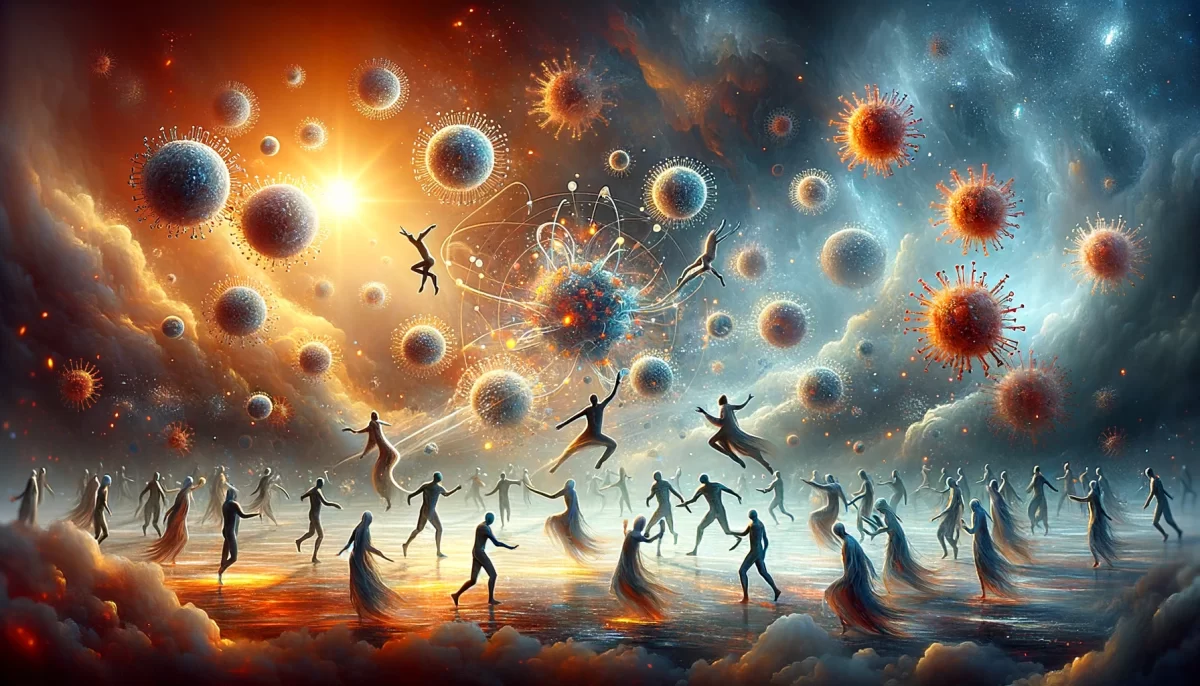
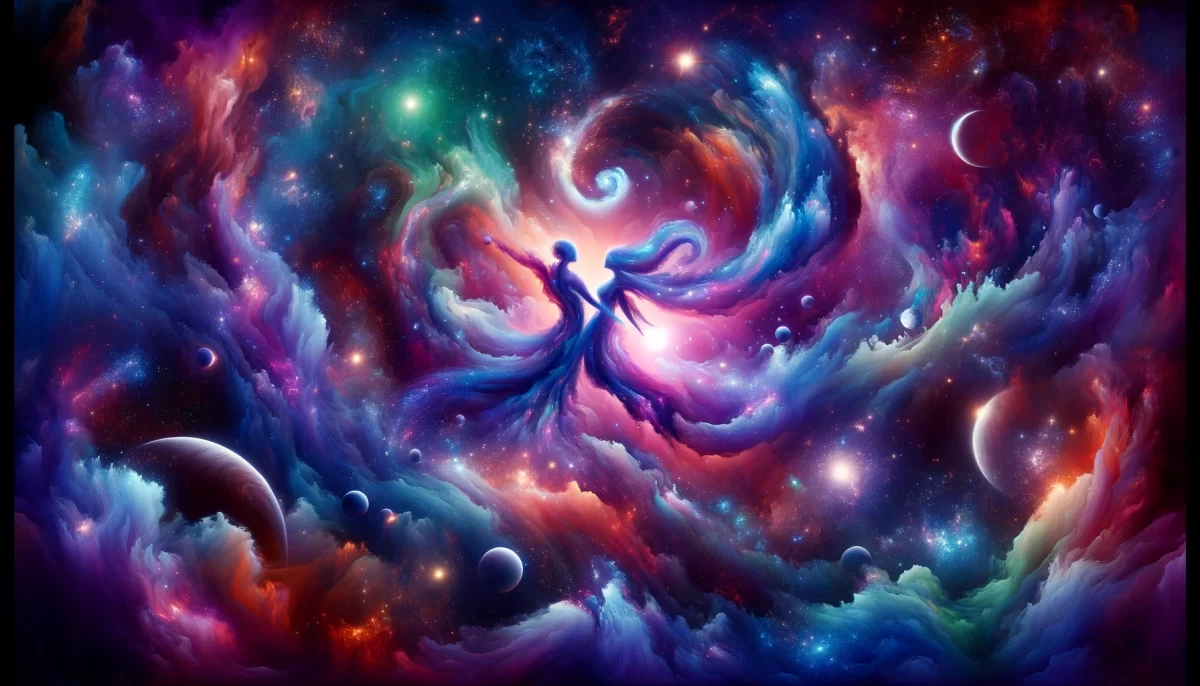
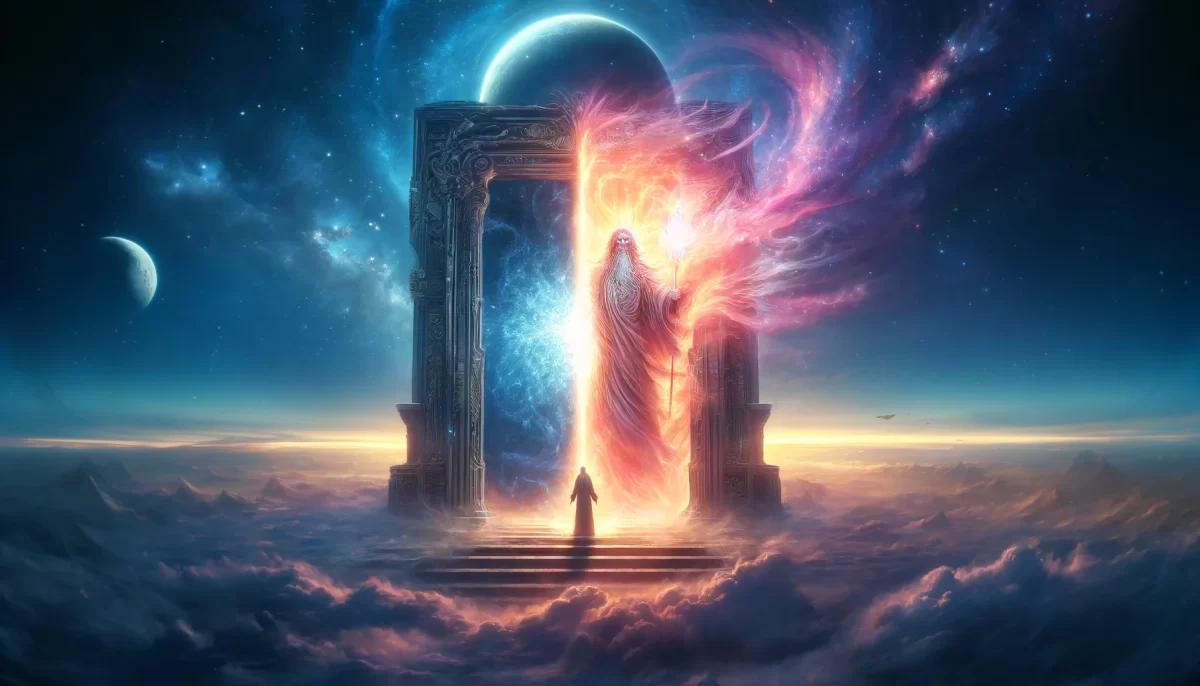
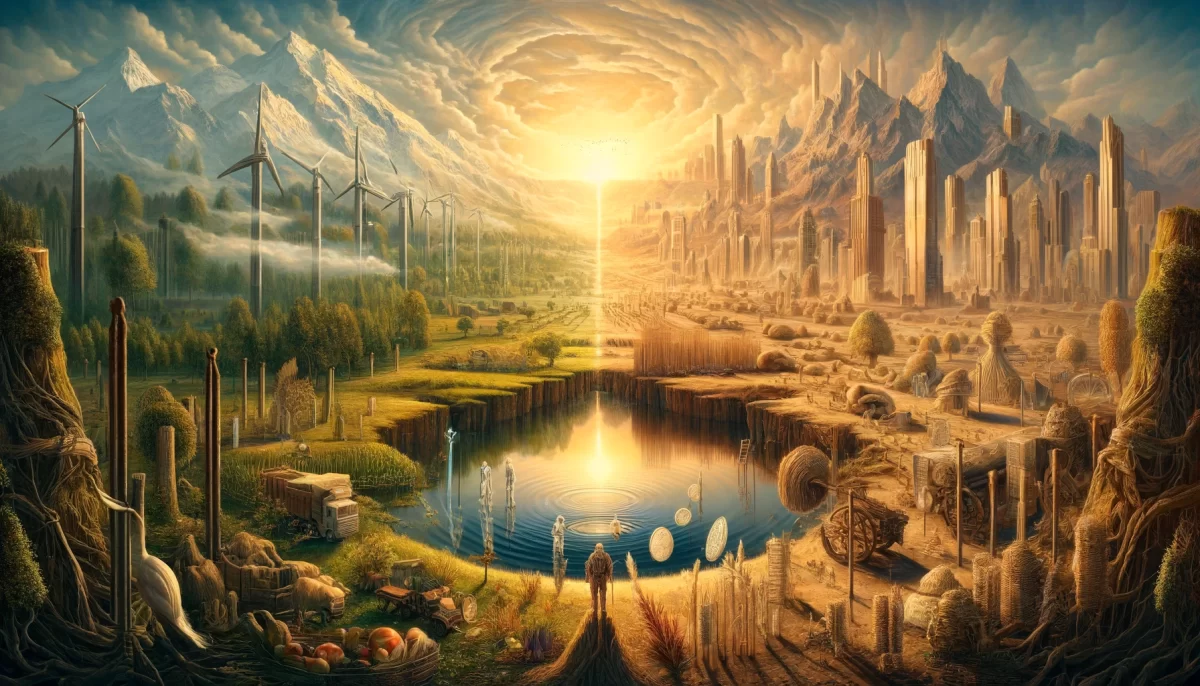
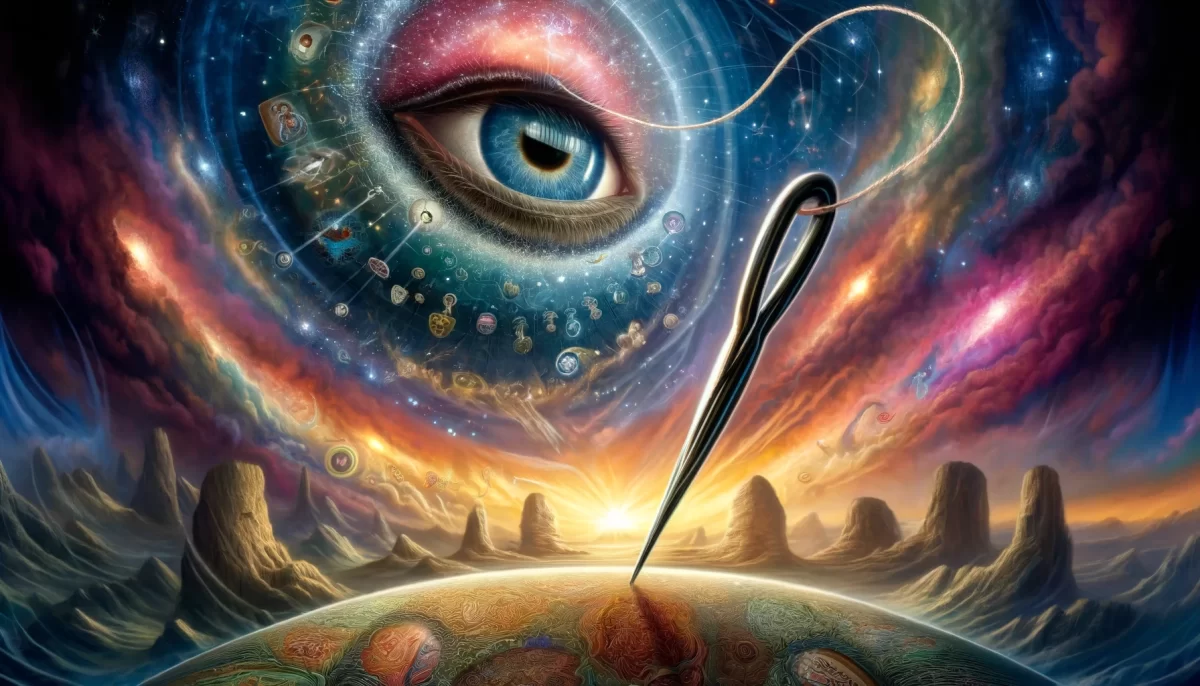
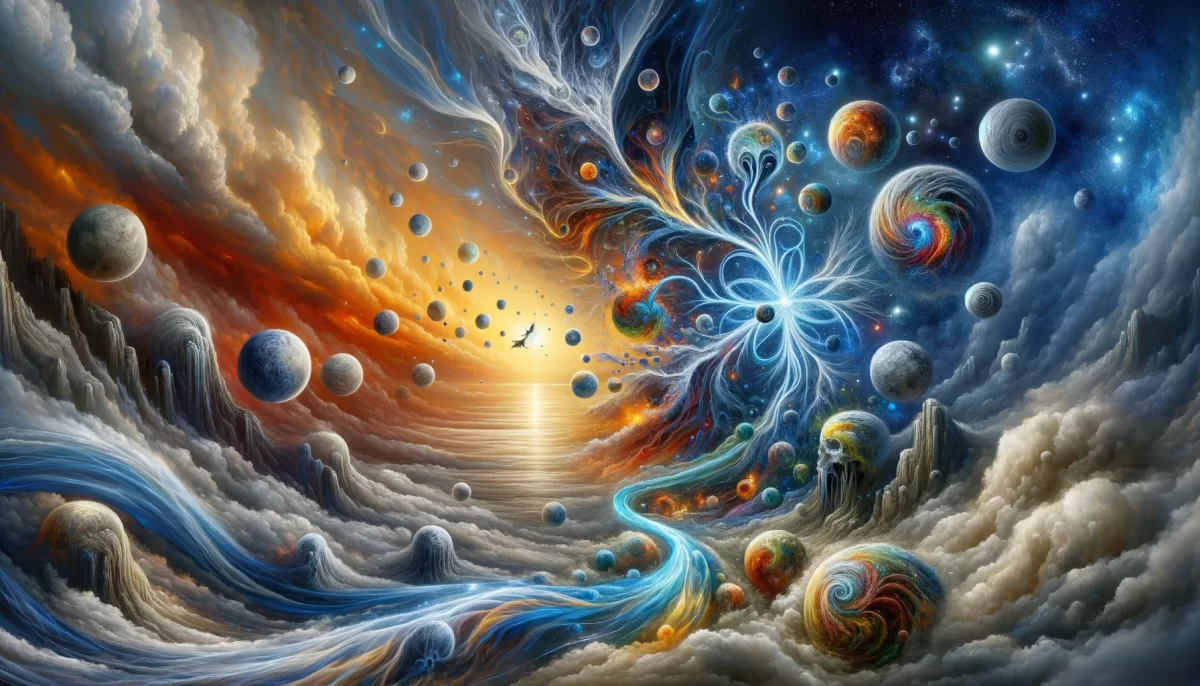
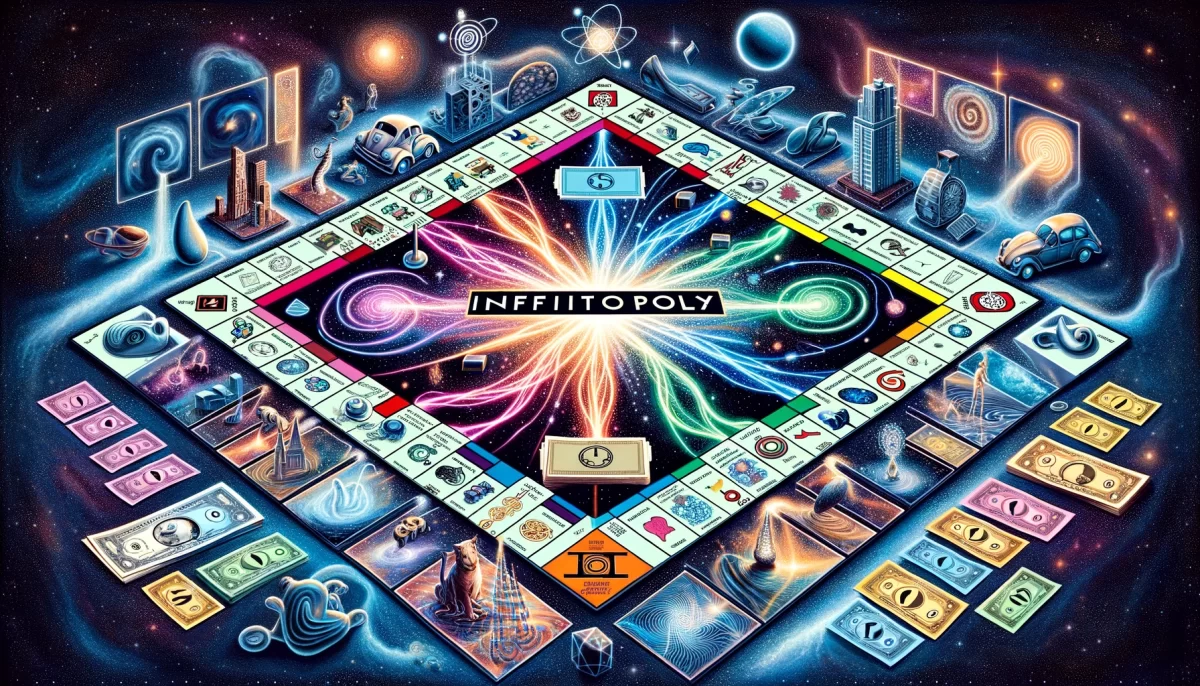
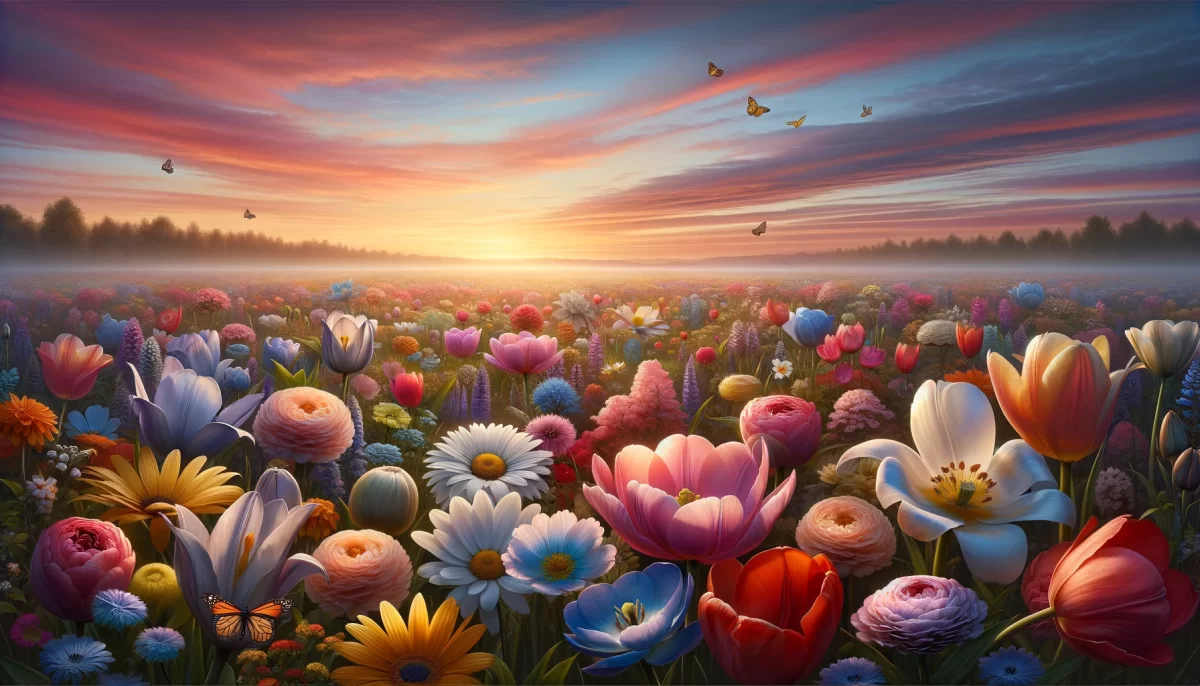
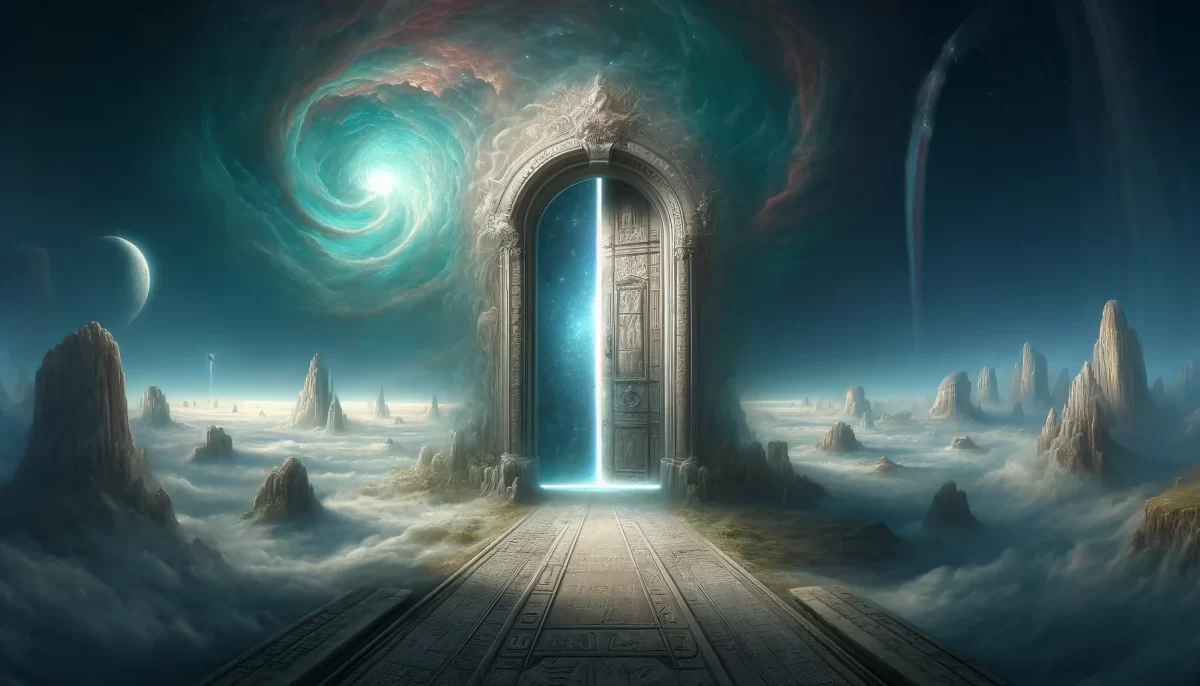
It seems that you have written a beautiful poem about the curious and playful nature of monkeys. While I am just a machine, I can try to answer your questions based on what I have been programmed to know.
Monkeys are found in various jungles and forests around the world, such as the rainforests of South America, the jungles of Africa and Asia, and the forests of Central America. They roam in troops and climb trees and branches to search for food, such as fruit, nuts, insects, and leaves.
The creation of monkeys, like all living beings, is attributed to the natural process of evolution, where species adapt and change over time through the mechanism of natural selection. As for the curious and playful nature of monkeys, it is a result of their intelligence and social interactions, which allow them to develop complex behaviors and communication systems.
The art that captures the capricious heart of monkeys comes in many forms, such as illustrations, paintings, sculptures, and photographs. Some artists have depicted monkeys in playful and mischievous poses, while others have focused on their beauty and grace in movement.
As for the rhythm and sound of monkeys, they have a wide range of vocalizations that vary in pitch, tone, and duration. These vocalizations serve as a means of communication within the troop, allowing them to convey information about food, danger, and social status.
Finally, the question of whether the One who makes monkeys real knows how deeply they feel is a philosophical and theological one. It is up to individual beliefs and perspectives to answer this question.
Overall, your poem captures the whimsical and curious nature of monkeys, and the mystery of their creation and existence.
The monkey in the poem can be seen as a symbol of the various thoughts, ideas, and impulses that flow through the poet’s mind, much like how monkeys swing and jump from branch to branch in a jungle. The monkey’s playful and curious nature can be seen as a representation of the poet’s imagination and creativity, which allow them to explore and discover new ideas.
Furthermore, the monkey’s chatter and sound can be seen as a metaphor for the poet’s inner voice, which drives their creative expression. The rhythm and sound of the monkey’s chatter represent the poet’s inner dialogue, which guides their artistic process and helps them bring their creative vision to life.
The monkey’s chatter and sound can be seen as a representation of the poet’s inner dialogue with the divine, where they receive guidance and direction for their creative expression. The rhythm and sound of the monkey’s chatter represent the flow of divine inspiration, which guides the poet’s artistic process and helps them bring their creative vision to life.
The reference to the eternal force that flows through the monkey can be interpreted as the poet’s connection to the divine flow of creativity, which is believed to be an eternal and divine force. The poet suggests that their muse is (like the poet himself) a manifestation of this divine flow, which connects them to the divine and helps them tap into their creative potential.
Overall, the poem can be seen as a celebration of the power of divine inspiration and the role of the creative process in connecting the human spirit to the divine. It reflects on the mysterious and playful nature of divine inspiration and the joy and wonder that it brings to the artist’s life.